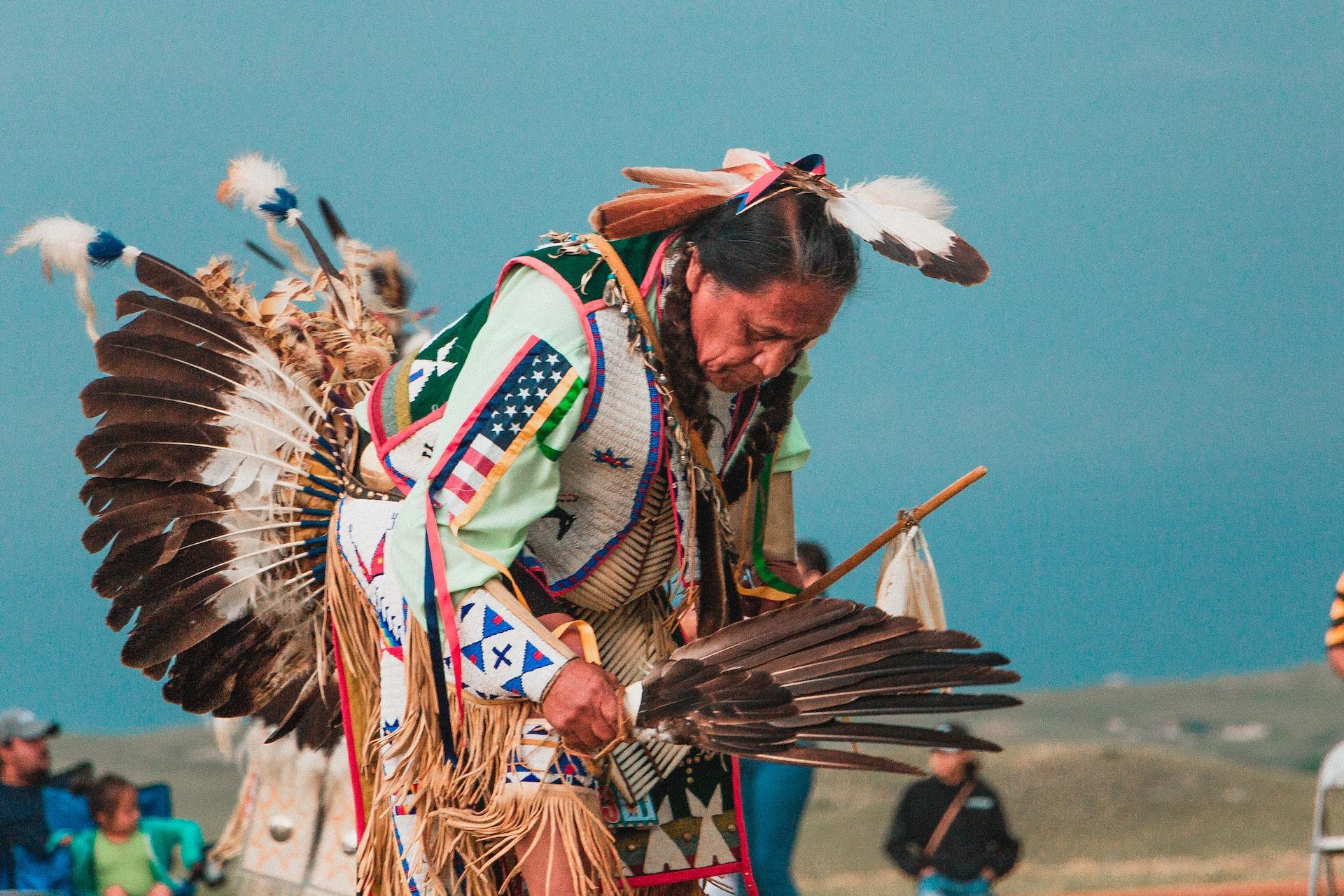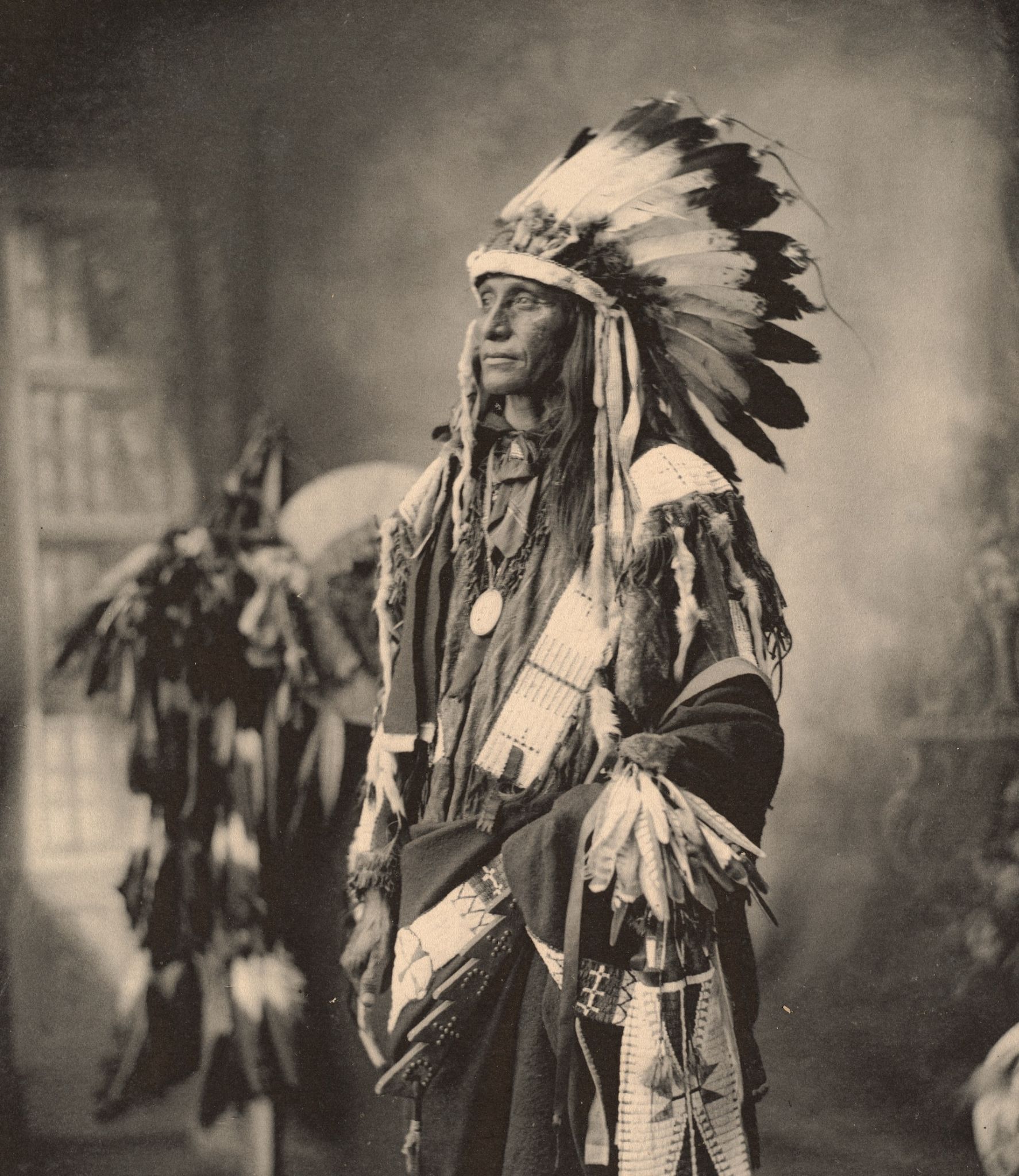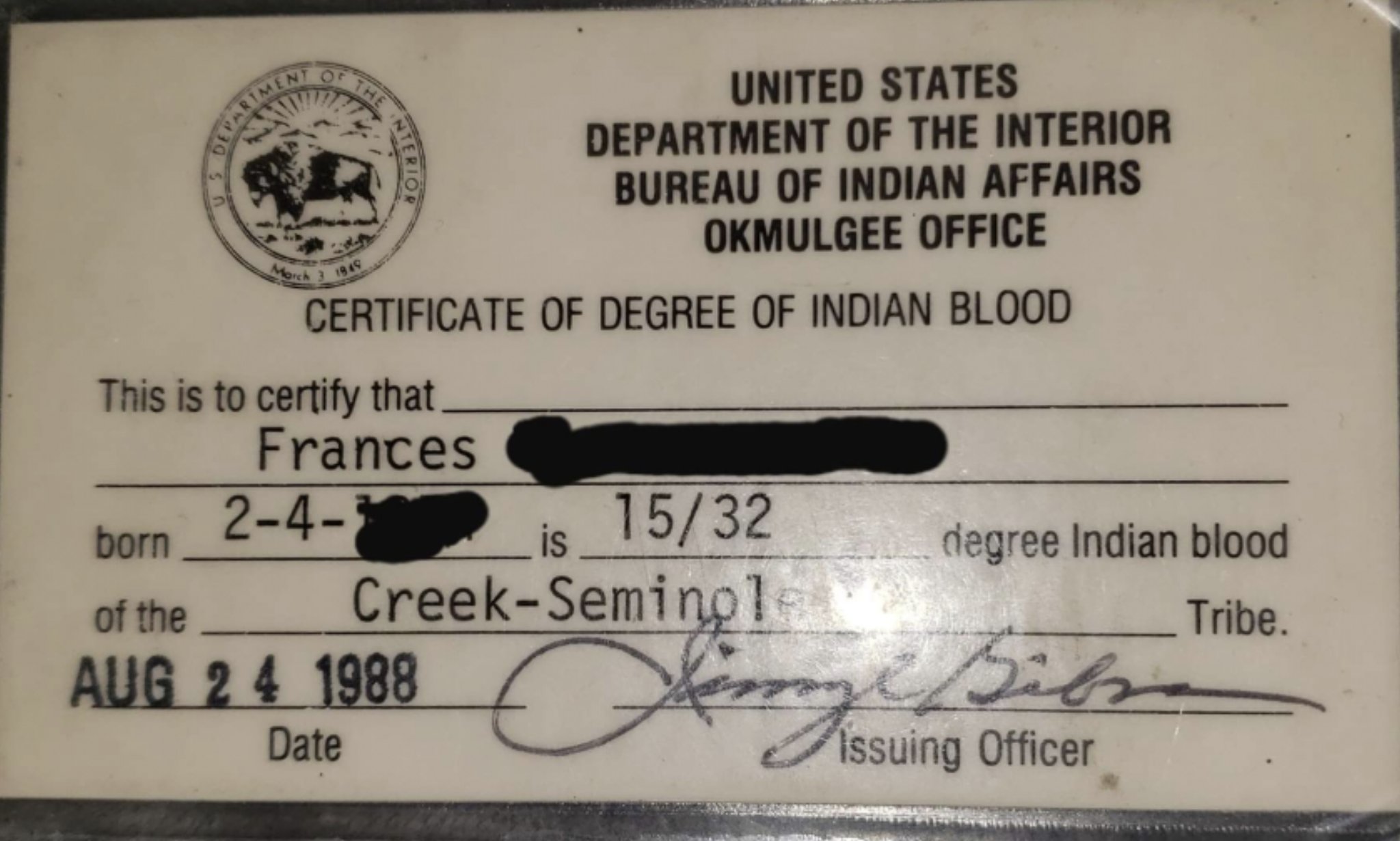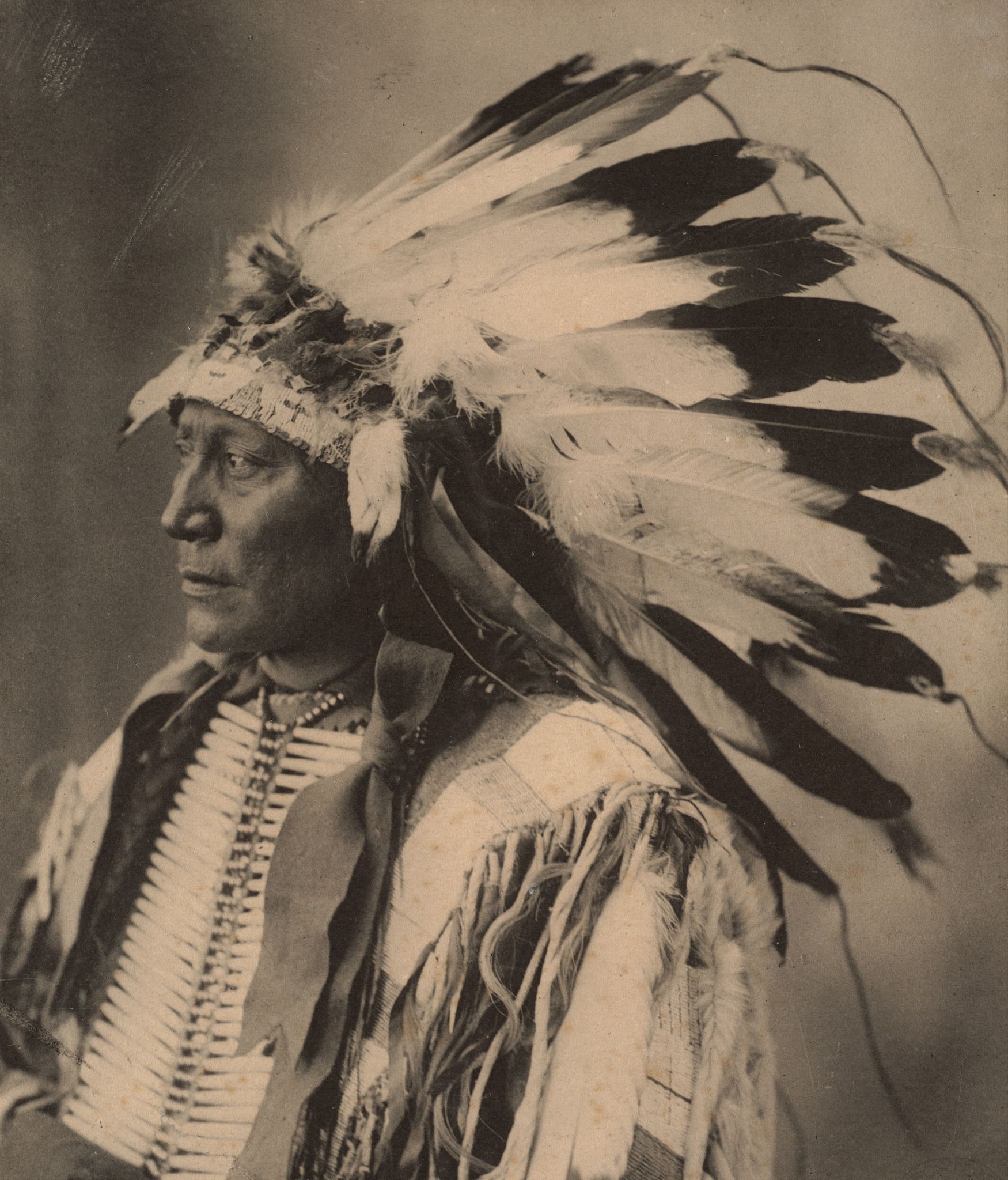How to Get a Certificate of Degree of Indian Blood
Native American History
Humans arrived in the Americas tens of thousands of years ago and may have done so in at least three significant waves of migration. Entering in through the Bering Strait land bridge, over time these early peoples would have spread out throughout North America expanding to the east and to the south.
Some of those groups would have carried on south over time into what we today know as Central and South America but those who settled into North America became the Native American cultures we know today.

Historically the Indigenous peoples of North America tended to be a semi-nomadic group of hunter-gatherers who had their established ranges. Their individual tribal origin stories were passed down over thousands of years verbally and often include stories of long migrations.
Unlike some of the South American indigenous civilizations the North American groups did not tend to create permanent architecture or settle in large numbers. They would gather the fruits and vegetables that they required and hunt for the meat they needed for survival.
Over time some plains groups started to realize they could affect the growth of the plants they needed. This included things like squash and beans. Around a thousand years ago however a newer crop arrived from the tropics, maize.
First cultivated in Mexico several thousand years ago over time the growing of maize would have been passed from tribe to tribe from Central America all the way to the Great Plains region.
Arrival of Europeans
The Native tribes of North America lived alongside each other sometimes cooperating, sometimes at war but there was a balance. This would all change in the years after Christopher Columbus first arrived in the Americas in 1492.
Spanish explorers were the first to encounter the North American tribes making significant contact in Florida and along the Gulf Coast. The European mentality was one of “The Doctrine of Discovery.” Essentially as they explored and “discovered” new lands they could claim them.
Through the 16th to 19th centuries the Native American populations sharply declined due to epidemic diseases brought by European settlers and early conflicts between the indigenous groups and the new settlers.
There is much conjecture as to how many indigenous people were living in North America prior to the European contact but numbers are estimated between 720,000 to as high as 15 million. Around 1800 the Native population of what is the present United States had dropped to 600,000 and by the 1890s this had reached just 250,000.
What Is a Certificate of Degree or Indian Blood (CDIB)?
A certificate of degree of Indian blood also known as certificate of Degree of Alaska Native Blood is an official government issued document certifying an individual as having provable ancestry to Native American groups.

These are issued by the Bureau of Indian Affairs after an individual provides adequate proof of their heritage and ancestry. Only official documentation and descent from a (CDIB) holder is enough to acquire such a document DNA evidence is never considered as ample proof.
What Are the Benefits of a Certificate of Degree of Indian Blood?
One of the principal things a CDIB shows is a person's specific fraction of Native American ancestry with certain federally recognized tribes requiring at least a minimum fraction to be present to allow membership.
Having a membership to a federally recognized tribe entitles the holder of such to certain tribal benefits and protections. These may include funds for housing, food and other services for members living on tribal lands.

As tribal membership grows more funds become available from government sources and their members enjoy the freedom of services geared toward the Native community. On their own lands they are subject to Native laws, courts and educational opportunities.
The degree of Indian blood required for membership to a specific tribe depends on tribal rules for that group for example the Eastern Band of Cherokee Indians requires at least 1/16 degree for membership.
|
Degrees of Tribal Blood Required by Each Recognized Tribe
|
|
Tribe
|
Location
|
Required Fraction
|
|
Northern Ute
|
Northeastern Utah
|
5/8 degree (the highest required fraction of all tribes)
|
|
Chippewa Cree
|
Montana
|
½ (at least one parent with full blood)
|
|
Kialegee Tribal Town
|
Oklahoma
|
½ (at least one parent with full blood)
|
|
Miccosukee
|
Mississippi
|
½ (at least one parent with full blood)
|
|
Mississippi band of Choctaw Indians
|
Mississippi
|
½ (at least one parent with full blood)
|
|
St Croix Chippewa
|
Wisconsin
|
½ (at least one parent with full blood)
|
|
Pueblo of Isleta
|
New Mexico
|
½ (at least one parent with full blood)
|
|
White Mountain Apache
|
Arizona
|
½ (at least one parent with full blood)
|
|
Yomba Shoshone
|
Nevada
|
½ (at least one parent with full blood)
|
|
Absentee-Shawnee
|
Oklahoma
|
¼ (at least one grandparent of full blood)
|
|
Ak-Chin Indian Community
|
Arizona
|
¼ (at least one grandparent of full blood)
|
|
Blackfeet Tribe of Blackfeet Indian Reservation
|
Montana
|
¼ (at least one grandparent of full blood)
|
|
Cheyenne and Arapaho
|
Oklahoma
|
¼ (at least one grandparent of full blood)
|
|
Colville Confederated Tribes
|
Washington
|
¼ (at least one grandparent of full blood)
|
|
Confederated Tribes and bands of the Yakama nation
|
Washington
|
¼ (at least one grandparent of full blood)
|
|
Confederated Tribes of the Chehalis Reservation
|
Washington
|
¼ (at least one grandparent of full blood)
|
|
Coushatta Tribe
|
Louisiana
|
¼ (at least one grandparent of full blood)
|
|
Ho-Chunk Nation
|
Wisconsin
|
¼ (at least one grandparent of full blood)
|
|
Hopi Tribe
|
Arizona
|
¼ (at least one grandparent of full blood)
|
|
Keweenaw Bay Indian Community
|
Michigan
|
¼ (at least one grandparent of full blood)
|
|
Kickapoo Traditional Tribe
|
Texas
|
¼ (at least one grandparent of full blood)
|
|
Kickapoo Tribe of Oklahoma
|
Oklahoma
|
¼ (at least one grandparent of full blood)
|
|
Kiowa Tribe of Oklahoma
|
Oklahoma
|
¼ (at least one grandparent of full blood)
|
|
Fort McDowell Yavapai Nation
|
Arizona
|
¼ (at least one grandparent of full blood)
|
|
Fort Peck Assiniboine and Sioux Tribes
|
Montana
|
¼ (at least one grandparent of full blood)
|
|
Lac du Flambeau Band of Lake Superior Chippewa
|
Wisconsin
|
¼ (at least one grandparent of full blood)
|
|
Laguna Pueblo
|
New Mexico
|
¼ (at least one grandparent of full blood)
|
|
Menominee Nation
|
Wisconsin
|
¼ (at least one grandparent of full blood)
|
|
Mohawk Tribe
|
New York and Ontario/Quebec, Canada
|
¼ (at least one grandparent of full blood)
|
|
Navajo
|
Arizona, Utah and New Mexico
|
¼ (at least one grandparent of full blood)
|
|
Oneida Tribe
|
Wisconsin
|
¼ (at least one grandparent of full blood)
|
|
Pascua Yaqui Tribe
|
Arizona
|
¼ (at least one grandparent of full blood)
|
|
Passamaquoddy Tribe
|
Maine
|
¼ (at least one grandparent of full blood)
|
|
Penobscot Tribe
|
Maine
|
¼ (at least one grandparent of full blood)
|
|
Poarch Band of Creek
|
Alabama
|
¼ (at least one grandparent of full blood)
|
|
Prairie Band of Potawatomi Nation
|
Kansas
|
¼ (at least one grandparent of full blood)
|
|
Seminole Tribe
|
Florida
|
¼ (at least one grandparent of full blood)
|
|
Shoshone Tribe of the Wind River Reservation
|
Wyoming
|
¼ (at least one grandparent of full blood)
|
|
Spokane Tribe
|
Idaho and Washington
|
¼ (at least one grandparent of full blood)
|
|
Standing Rock Sioux Tribe
|
North and South Dakota
|
¼ (at least one grandparent of full blood)
|
|
Turtle Mountain Band of Chippewa
|
North Dakota
|
¼ (at least one grandparent of full blood)
|
|
United Keetoowah Band of Cherokee Indians
|
Oklahoma
|
¼ (at least one grandparent of full blood)
|
|
Utu Utu Gwaitu Paiute Tribe
|
California
|
¼ (at least one grandparent of full blood)
|
|
Yavapai-Prescott Tribe,
|
Arizona
|
¼ (at least one grandparent of full blood)
|
|
Zuni Pueblo
|
New Mexico
|
¼ (at least one grandparent of full blood)
|
|
Agua Caliente Band of Cahuilla Indians
|
California
|
1/8 (equivalent to one full blood great-grandparent)
|
|
Apache Tribe
|
Oklahoma
|
1/8 (equivalent to one full blood great-grandparent)
|
|
Comanche Nation
|
Oklahoma
|
1/8 (equivalent to one full blood great-grandparent)
|
|
Delware Nation
|
Oklahoma
|
1/8 (equivalent to one full blood great-grandparent)
|
|
Fort Belknap Indian Reservation, Aaniiih and Nakoda
|
Montana
|
1/8 (equivalent to one full blood great-grandparent)
|
|
Fort Sill Apache Tribe
|
Oklahoma
|
1/8 (equivalent to one full blood great-grandparent)
|
|
Hooopa Valley Tribe
|
California
|
1/8 (equivalent to one full blood great-grandparent)
|
|
Karuk Tribe
|
California
|
1/8 (equivalent to one full blood great-grandparent)
|
|
Klamath Tribe
|
California
|
1/8 (equivalent to one full blood great-grandparent)
|
|
Muckleshoot Indian Tribe
|
Washington
|
1/8 (equivalent to one full blood great-grandparent)
|
|
Northwestern Band of Shoshoni Nation
|
Utah
|
1/8 (equivalent to one full blood great-grandparent)
|
|
Otoe-Missouria Tribe
|
Oklahoma
|
1/8 (equivalent to one full blood great-grandparent)
|
|
Pawnee Nation
|
Oklahoma
|
1/8 (equivalent to one full blood great-grandparent)
|
|
Ponca Nation
|
Oklahoma
|
1/8 (equivalent to one full blood great-grandparent)
|
|
Sac and Fox Nation
|
Oklahoma
|
1/8 (equivalent to one full blood great-grandparent)
|
|
Sac and Fox Nation of Missouri
|
Kansas and Nebraska
|
1/8 (equivalent to one full blood great-grandparent)
|
|
Squaxin Island Tribe
|
Washington
|
1/8 (equivalent to one full blood great-grandparent)
|
|
Suquamish Tribe Port Madison Reservation
|
Washington
|
1/8 (equivalent to one full blood great-grandparent)
|
|
Three Affiliated Tribes of the Fort Berthold Reservation
|
North Dakota, Wyoming Montana
|
1/8 (equivalent to one full blood great-grandparent)
|
|
Upper Skagit Indian Tribe
|
Washington
|
1/8 (equivalent to one full blood great-grandparent)
|
|
Yurok Tribe
|
California
|
1/8 (equivalent to one full blood great-grandparent)
|
|
Wichita and Affiliated Tribes
|
Oklahoma, Texas and Kansas
|
1/8 (equivalent to one full blood great-grandparent)
|
|
Caddo Nation
|
Oklahoma
|
1/16 (equivalent to one full blood great-great-grandparent)
|
|
Confederated Tribes of the Grand Ronde Community
|
Oregon
|
1/16 (equivalent to one full blood great-great-grandparent)
|
|
Confederated Tribes of Siletz Indians
|
California and Washington
|
1/16 (equivalent to one full blood great-great-grandparent)
|
|
Eastern Band of Cherokee Indians,
|
North Carolina
|
1/16 (equivalent to one full blood great-great-grandparent)
|
|
Fort Independence Reservation Community of Paiute Indians,
|
California
|
1/16 (equivalent to one full blood great-great-grandparent)
|
|
Fort Sill Apache Tribe
|
Oklahoma
|
1/16 (equivalent to one full blood great-great-grandparent)
|
|
Iowa Tribe
|
Oklahoma
|
1/16 (equivalent to one full blood great-great-grandparent)
|
|
Jena Band of Choctaw
|
Louisiana
|
1/32 (equivalent to one full blood great-great-great-grandparent)
|
How Do You Apply for a Certificate of Degree of Indian Blood?
In order to qualify for a certificate of degree of Indian blood you must be able to prove a familial relationship by blood to an enrolled member of the federally recognized tribe you are seeking to join. As the table above shows various tribes require differing levels of connection so for example applying to the Chippewa Cree you would need a full parent who was a member of that tribe.
Your degree of Indian blood would be calculated from your lineal ancestors based on their enrollment with a federally recognized tribe. This is determined from census rolls and you may only have a membership to one tribe.

You will require pertinent documentation to prove your connection to a qualifying ancestor including birth and death certificates that create the link between yourself and the enrolled member. If for example your claim if through a great-great-grandparent you will need the birth and death records for that individual and their descendants which link to you.
You will need to file the paperwork specific to the tribe you are seeking to join with all needed proof in the terms of certified documents. You can find all the needed documents through the Bureau of Indian Affairs.
Final Thoughts
You must be able to prove a link with official paperwork between you and an enrolled member of a federally recognized tribe in order to obtain a certificate of Degree of Indian Blood. The fraction of blood connection to that tribe must fall within its minimum limits with some tribes being more selective than others.
Neil Edwards
Genealogist and family-tree research specialist
Neil was born in Shropshire, England surrounded by centuries of living history. His interest in the past has been a lifelong passion leading to undergraduate degrees in both Economic History & Geography and History & Politics.
This interest in history quickly translated to family history when he moved to the U.S. in 2010. It was here that he began working on his own family tree as well as that of his American wife. That research allowed him to gain a wealth of experience working with both U.S. and European genealogical documents and studying their best uses in researching family history.
Following 9 years of honing his genealogical research skills, Neil was proud to have earned a certificate in Genealogical Research from Boston University in late 2019. Neil also took part in the research process for a Duke University study into the families of 19th Century UK Members of Parliament.
Link To or Reference This Page
We spent a lot of time downloading, cleaning, merging, and formatting the data that is shown on the site.
If you found the data or information on this page useful in your research, please use the tool below to properly cite or reference Name Census as the source. We appreciate your support!
-
<a href="https://namecensus.com/blog/how-to-get-a-certificate-of-degree-of-indian-blood/">How to Get a Certificate of Degree of Indian Blood</a>
-
"How to Get a Certificate of Degree of Indian Blood". NameCensus.com. Accessed on April 27, 2024. https://namecensus.com/blog/how-to-get-a-certificate-of-degree-of-indian-blood/.
-
"How to Get a Certificate of Degree of Indian Blood". NameCensus.com, https://namecensus.com/blog/how-to-get-a-certificate-of-degree-of-indian-blood/. Accessed 27 April, 2024
-
How to Get a Certificate of Degree of Indian Blood. NameCensus.com. Retrieved from https://namecensus.com/blog/how-to-get-a-certificate-of-degree-of-indian-blood/.




